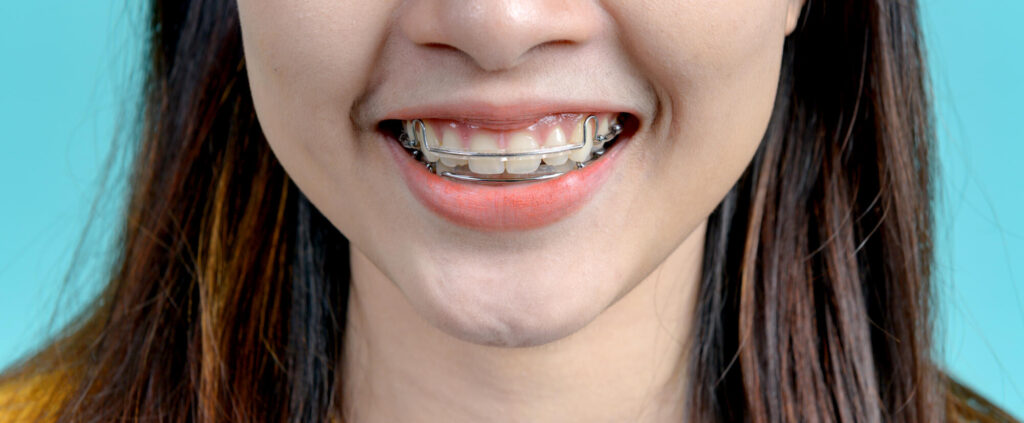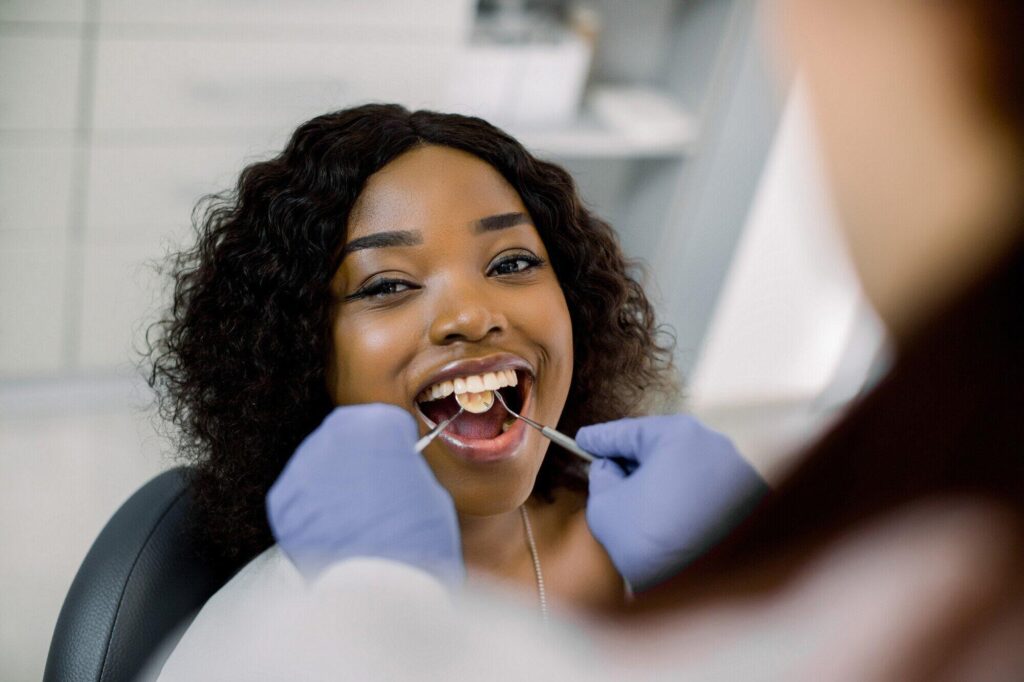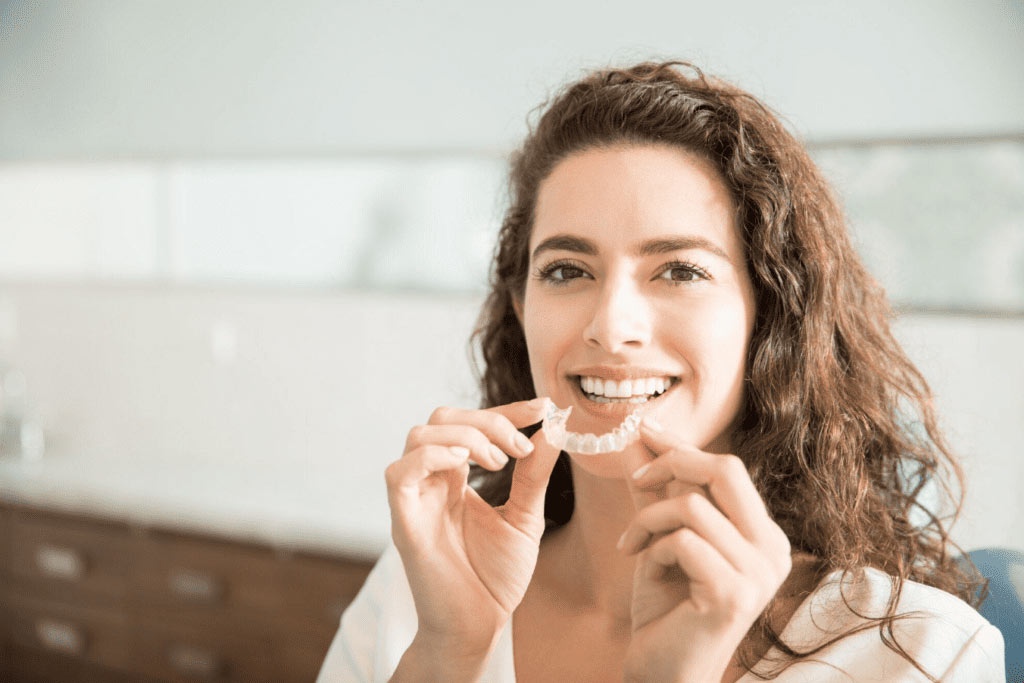September 18, 2024
A 2023 review by Consumer Affairs found that clear aligner therapy works for mild to moderate tooth movements 80% to 90% of the time. This impressive success rate makes clear aligners a popular option for teeth straightening.
But how do clear aligners work, and why do so many people choose them over traditional braces? If you’re considering invisible braces for yourself or your child, understanding the science behind the clear aligner process can help you make an informed decision.
What Are Clear Aligners?
Clear aligners are transparent, custom-made trays that fit over your teeth to gently guide them into the desired position. Unlike traditional metal braces, they are almost invisible and removable, making them a convenient option for adults and kids. These trays are BPA-free plastic, providing comfort and flexibility while still delivering effective orthodontic treatment.
The Technology Behind Clear Aligners
Clear aligners use advanced digital technology to map out the movement of your teeth. Here’s a breakdown of the clear aligner process.
Consultation and Scanning
A thorough dental assessment is conducted, including digital impressions of your teeth. Using 3D scanning technology, orthodontists can create a detailed map of your current teeth alignment.
Treatment Planning
Based on these scans, a custom treatment plan is developed. The plan outlines each stage of tooth movement and provides a timeline for the treatment.
Manufacturing of Aligners
A series of aligners is created for your teeth. Each set moves your teeth gradually, usually by about 0.25 to 0.3 millimeters per aligner.
Wear and Progress
You’ll wear each aligner for about one to two weeks before moving on to the next set. The clear aligner process continues until your teeth reach their final, straightened position.
How Do Clear Aligners Work to Move Teeth?
Teeth may seem firmly anchored in place, but they sit within a soft tissue bed that allows for slight movement. When pressure is applied over time, the bone and ligaments around the tooth change to fit the new position.
Clear aligners work by applying gentle, controlled force to teeth in specific directions. The force is distributed evenly across the aligners, guiding the teeth into a better alignment over time.
Targeted Pressure
Aligners apply pressure at specific points. The pressure stimulates bone remodeling, a natural process where the bone is broken down and rebuilt to support the tooth’s new position.
Gradual Adjustments
Each set of aligners is a little different from the previous one. This creates a step-by-step process that gradually shifts teeth over time.
Retention
Patients wear retainers after completing the active treatment to hold the teeth in their new position. Retainers help prevent any shifting.
Why Choose Clear Aligners?
For many, the decision to choose clear aligners comes down to convenience, appearance, and comfort. Clear aligners offer several clear aligner benefits that make them an attractive alternative to other treatment options..
Discreet Appearance
Since they are invisible, clear aligners allow you to maintain your natural smile throughout treatment. This feature is especially appealing to adults who may feel self-conscious about wearing braces.
Removability
Clear aligners can be removed when eating or drinking, making oral hygiene easier to maintain. It reduces the risk of plaque buildup, cavities, and gum disease.
Fewer Dietary Restrictions
With clear aligners, you can continue enjoying your favorite meals by removing the aligners before eating.
Comfort
Clear aligners fit snugly over the teeth, providing a comfortable experience throughout treatment. Their custom-made fit also lessens the risk of irritation to the gums and inner cheeks.
Shorter Treatment Times
In some cases, treatment with clear aligners can be quicker than other treatment options. Patients may see results in as little as six months to a year for mild to moderate misalignments.
The Science Behind Effective Orthodontic Treatment
The clear aligner process involves precise planning, advanced technology, and an understanding of how teeth move. Orthodontic treatment with clear aligners takes advantage of the body’s natural processes to safely shift teeth.
The science of tooth movement, known as mechanobiology, plays a crucial role in the effectiveness of aligner therapy. When pressure is applied, the cells around the tooth’s root respond by breaking down bone on one side and building up bone on the other, allowing the tooth to move.
Orthodontists design aligners with these principles in mind, offering a solution tailored to your specific dental needs. Each set of aligners not only aligns your teeth but also minimizes the risks of damage to the roots and supporting bone structures.
What to Expect During Clear Aligner Treatment
Before starting the clear aligner process, your orthodontist will outline the stages of treatment and what you can expect during each phase. At SouthShore Orthodontics, you’ll receive comprehensive care throughout the entire process. From the initial consultation to your final set of aligners, the team ensures a smooth, customized experience.
Here’s what the treatment involves:
- Initial consultation
- Custom aligners
- Progress checkups
Teeth Straightening Options: Is Clear Aligner Treatment Right for You?
Clear aligners are an excellent alternative to traditional braces if you’re considering teeth straightening options. However, more severe cases of misalignment may still require traditional braces or other treatments. It’s important to contact an orthodontist to see what the best treatment is for you or your child.
SouthShore Orthodontics offers a wide range of orthodontic treatment options, including our very own Simply SouthShore Aligners, to suit the needs of adults and children alike. Whether you want clear aligners or other teeth straightening options, their team can guide you toward the right solution.
Achieve a Straighter Smile With Clear Aligners
How do clear aligners work? Clear aligners straighten teeth through gradual, controlled movements by harnessing advanced digital technology and the body’s natural processes.
Clear aligners have many benefits. They look discreet, can be removed, and are comfortable. This makes them a popular choice for both adults and children.
To explore clear aligners and other teeth straightening options, schedule a consultation with SouthShore Orthodontics today. The team will create a custom treatment plan tailored to your needs, ensuring you achieve the smile you’ve always wanted.






